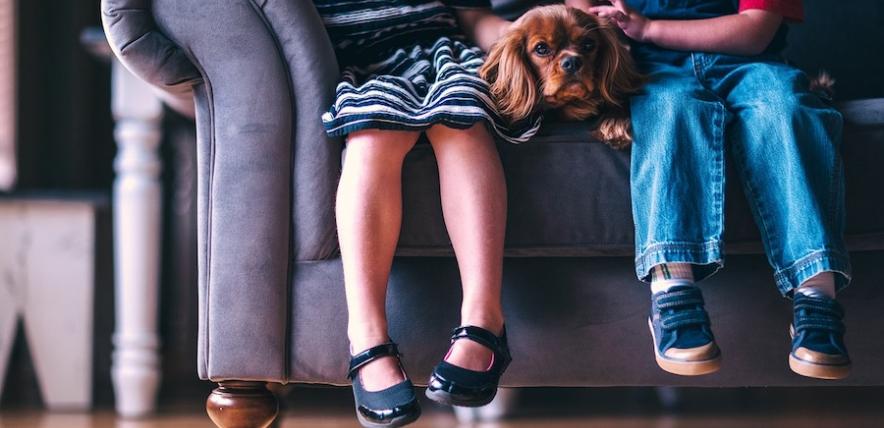Learning how to behave around dogs can help teach children to respect animals, while also keeping them safe. The Dogs Trust shares its top tips for being dog smart.
Home is where the heart is, and for many people having a pet is what completes their home. Unfortunately, a high number of dog bites happen in the family home. There are a number of reasons behind this, but with a little consideration, you might be able to help families avoid dog bites.
The rate of hospital admissions for dog bites are highest amongst young children – 1,134 children were hospitalised due to a dog bite between 2015-2016 and 56% of these were aged under four.
Families often believe that their pet would not hurt a fly, and in most cases they are right.
But the truth is that all dogs – no matter how big or small – have teeth. When a dog feels scared, nervous or threatened, they are likely to growl or bite at whatever is making them feel that way, as a means of protecting themselves.
The number one rule for keeping children safe around a dog is to actively supervise at all times – never leave children unattended with a dog.
Here are some more top tips to help keep children safe around dogs:
- Running and shouting
Children who are shouting, running around and playing noisily can easily frighten a dog. Chasing a dog can also get them overexcited, and they might find it hard to control themselves. If children are playing noisily in the house, try to find something nice that the dog can do separately in a different area of the house – suggest they try a food-releasing toy.
- Invading a dog’s space
Dogs can get scared if children get too close to their faces. They need space and may feel threatened by someone smothering them with hugs and kisses. Even though some dogs do tolerate this, it is far safer to teach children not to do this at all.
- Poking and pulling
Small children in particular might be tempted to pull and poke at a dog, which may hurt or irritate them. Hurt or worried dogs may bite. They don’t know any better, so tell children never to do this and make sure they are always supervised and never left alone with a dog. Similarly, older children may be tempted to tease dogs. This can make a dog angry or frustrated enough to bite. If a dog has a food or a toy, children should be told not to try and take it away from them.
- Sleeping and feeding times
Dogs can feel particularly vulnerable when they are sleeping, eating or drinking. Children should be encouraged to leave them alone at these times. Dogs, like us, need their space or they can react badly. Remind children that they would not like to be rudely awoken or disrupted during mealtimes.
- Dog body language
Like us, dogs are living creatures that can become frightened, angry or stressed, particularly if something upsets them. Here are a few body language signs to look out for:
If a dog’s ears are back, his tail is between his legs and he is cowering, he is probably scared.
If a dog is licking his lips and yawning when he is not tired or hungry, he could be stressed. This is less obvious one, so make sure you are aware of these small signs.
If a dog is moving or turning away, this might mean that he doesn’t want your attention so if it is safe to do so, just let him be.
If a dog’s teeth are bared and he is growling, this is likely to mean that he is is extremely uncomfortable about whatever is happening. He could bite as a way of trying to keep himself safe. The best thing to do is to immediately stop whatever is happening to or around him and then quietly, calmly and slowly move everybody away.
Remember: Be Dog Smart
- Beware of disturbing dogs that are eating or sleeping.
- Even if for fun, don’t ever tease a dog.
- Don’t approach a dog with no owner around.
- Only stroke a dog when the owner says ‘Yes, you can.’
- Get the dog to sniff your hand first, then stroke gently.
- Strange dog approaching? Stand still, look away, cross your arms.
- Move calmly and quietly around any dog.
- All that hugging and kissing – you might like it, not all dogs do.
- Remember all dogs have teeth.
- Treat dogs with kindness and respect.
Find out more
Get more advice and free resources on keeping children safe around dogs at Be Dog Smart
This article first appeared in Under 5 magazine



